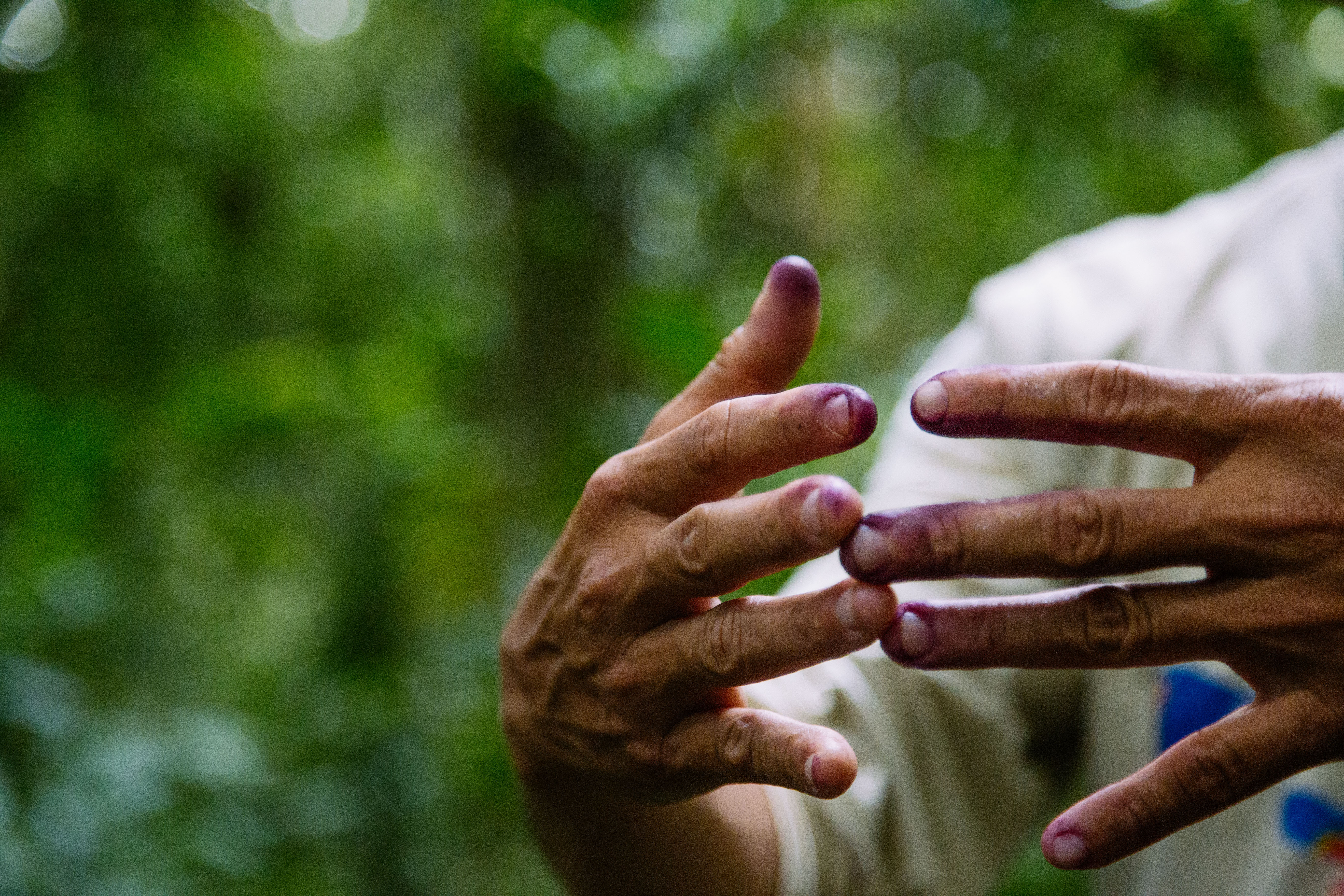
People living by Tambopata sought care not just from the plants themselves, but also from the rituals associated with healing.
By Alison Mosier-Mills
[divider]
[dropcap]M[/dropcap]any of the activities included on our three-day Tambopata National Reserve itinerary emphasized the interdependence of indigenous cultures and the landscapes that house them. This relationship was most clear in our discussion of “jungle medicine” during a two-hour walk in the rainforest surrounding Collpas Tambopata Inn. During the walk, our guide, Nilthon, informed us of the health benefits that local people derive from the plants and animals that grow beneath the thick canopy of trees.
Some of the anecdotes were practical survival skills—if you’re lost in the jungle, he advised, reach first for a handful of termites to satisfy your hunger (they taste surprisingly minty!)—while other tips offered alternatives to the biomedical paradigms to which we are accustomed. Nilthon claimed that the painful aftermath of a freshwater stingray strike, which typically necessitates a two- or three-day hospital visit, would subside after just forty-five minutes of exposing the injury to the smoke of a burning termite nest. He also asserted that chewing a certain “jungle aspirin” root would cure a fever, and that resin from trees could be used to immobilize a broken limb to expedite the healing process. He highlighted the potential for a clash between cultures when discussing an insect that biologists dismiss as harmless, but local people describe as highly toxic—provocatively asking us which authority we were more likely to trust. (Given that the nearest city, Puerto Maldonado, was two-and-a-half-hours by boat plus forty-five minutes by 4×4 truck, it didn’t seem like we’d have much of a choice.)
Nilthon’s discussion of shamanistic medicine, in particular, departed from a purely physical explanation of illness and ventured into a more emotional and spiritual realm: the mind, according to indigenous beliefs, must be mended before the body can heal. In one example, he claimed that a local girl’s chronic pain was cured when she asked a tree for forgiveness. These beliefs are not necessarily unique to Peru, given that similar practices have been well-documented in ethnographies describing other Shamanistic cultures. They do, however, illustrate the community’s dependence on the environment.
Historically, one way that healthcare practitioners have bridged the divide between pharmacology and traditional care is by incorporating chemicals extracted from locally-used medicinal plants into pharmaceuticals. In nineteenth-century Peru, for example, the bark of the cinchona tree was used to create quinine, a malaria medication. This type of extraction, however, inherently strips the traditional medicine of any cultural significance and instead isolates a particularly salient chemical component. Our discussions with Nilthon demonstrated that local people living around Tambopata sought care not just from the plants themselves, but also from the rituals associated with healing.
As I research my piece for the fall issue of The Yale Globalist—I’m writing about the health effects of the mercury used by informal miners in Peru—I’ve spoken with indigenous rights activists about the greatest health and environmental challenges facing communities like those living near the Tambopata National Reserve. They’ve highlighted a lack of governmental recognition, limited access to doctors and hospitals, and environmental destruction as major issues plaguing these people. The detrimental ecological effects of mining inevitably alter the relationship between indigenous people and their environment, thus destroying a source of healing upon which they rely. Given that these communities already lack many healthcare services afforded to their urban counterparts, it is clear that health options risk becoming increasingly limited. Listening to Nilthon’s nature walk demonstrated what these communities stand to lose from environmental destruction.
Alison Mosier-Mills is a senior double American Studies and History of Science and Medicine major in Jonathan Edwards College. Contact her at alison.mosier-mills@yale.edu.